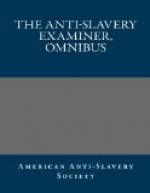THE PROTECTION EXTENDED BY ‘PUBLIC OPINION,’ TO THE HEALTH[38] OF THE SLAVES.
This may be judged of from the fact that it is perfectly notorious among slaveholders, both North and South, that of the tens of thousands of slaves sold annually in the northern slave states to be transported to the south, large numbers of them die under the severe, process of acclimation, all suffer more or less, and multitudes much, in their health and strength, during their first years in the far south and south west. That such is the case is sufficiently proved by the care taken by all who advertise for sale or hire in Louisiana, Mississippi, Alabama, Arkansas, &c. to inform the reader, that their slaves are ‘Creoles,’ ‘southern born,’ ‘country born,’ &c. or if they are from the north, that they are ‘acclimated,’ and the importance attached to their acclimation, is shown in the fact, that it is generally distinguished from the rest of the advertisements either by italics or CAPITALS. Almost every newspaper published in the states far south contains advertisements like the following.
[Footnote 38: See pp. 37-39.]
From the “Vicksburg (Mi.) Register,” Dec. 27, 1838.
“I OFFER my plantation for sale. Also seventy-five acclimated Negroes. O.B. COBB.”
From the “Southerner,” June 7, 1837.
“I WILL sell my Old-River plantation near Columbia in Arkansas;—also ONE HUNDRED AND THIRTY ACCLIMATED SLAVES.
BENJ. HUGHES.”
Port Gibson, Jan. 14, 1837.
From the “Planters’ (La.) Intelligencer,” March 22.
“Probate sale—Will be offered for sale at Public Auction, to the highest bidder, ONE HUNDRED AND THIRTY acclimated slaves.”
G.W. KEETON.
Judge of the Parish of Concordia”
From the “Arkansas Advocate,” May 22, 1837.
“By virtue of a Deed of Trust, executed to me, I will sell at public auction at Fisher’s Prairie, Arkansas, sixty LIKELY NEGROES, consisting of Men, Women, Boys and Girls, the most of whom are WELL ACCLIMATED.
GRANDISON D. ROYSTON, Trustee.”
From the “New Orleans Bee,” Feb. 9, 1838.
“VALUABLE ACCLIMATED NEGROES”




